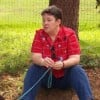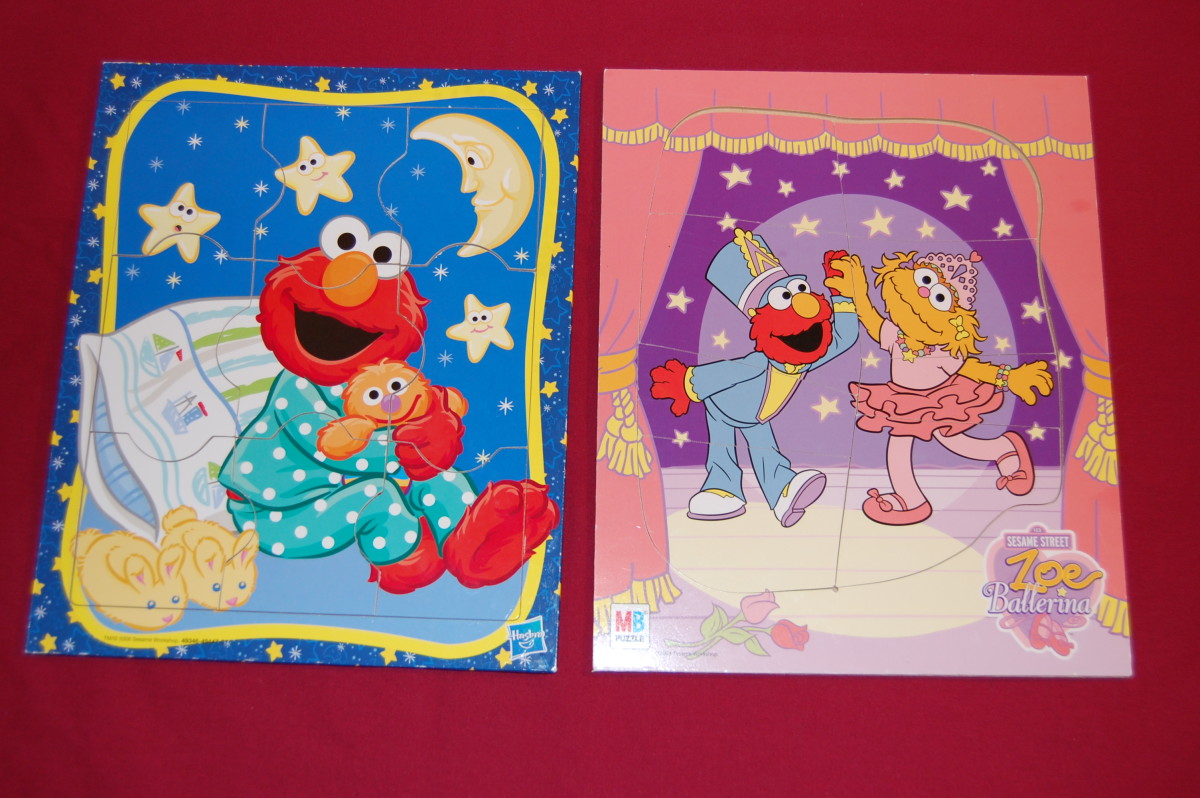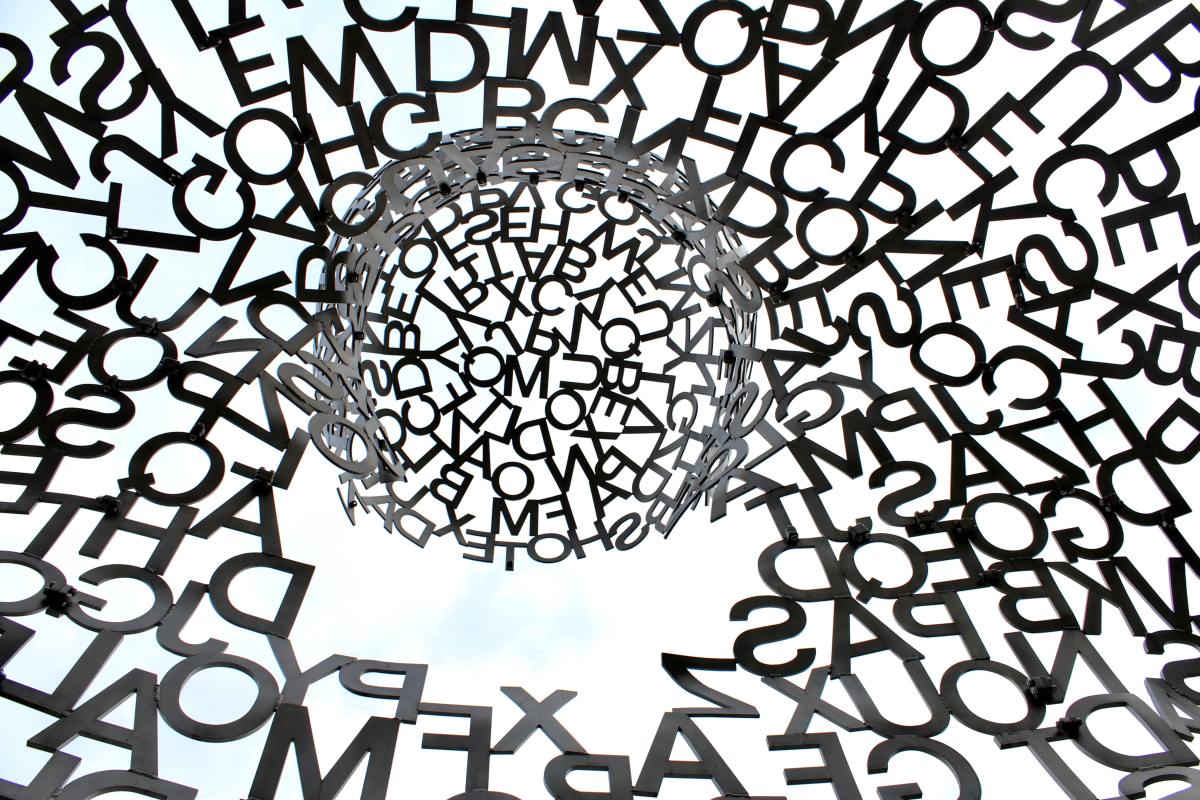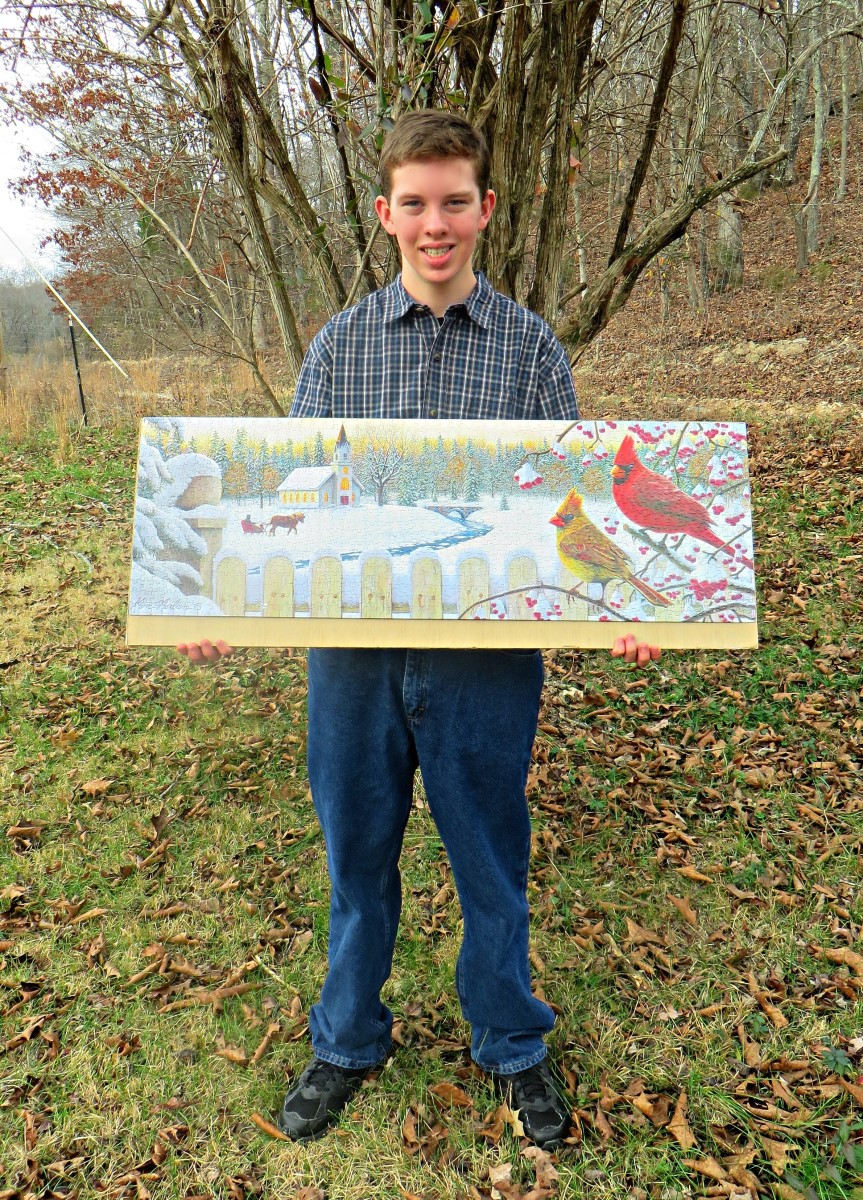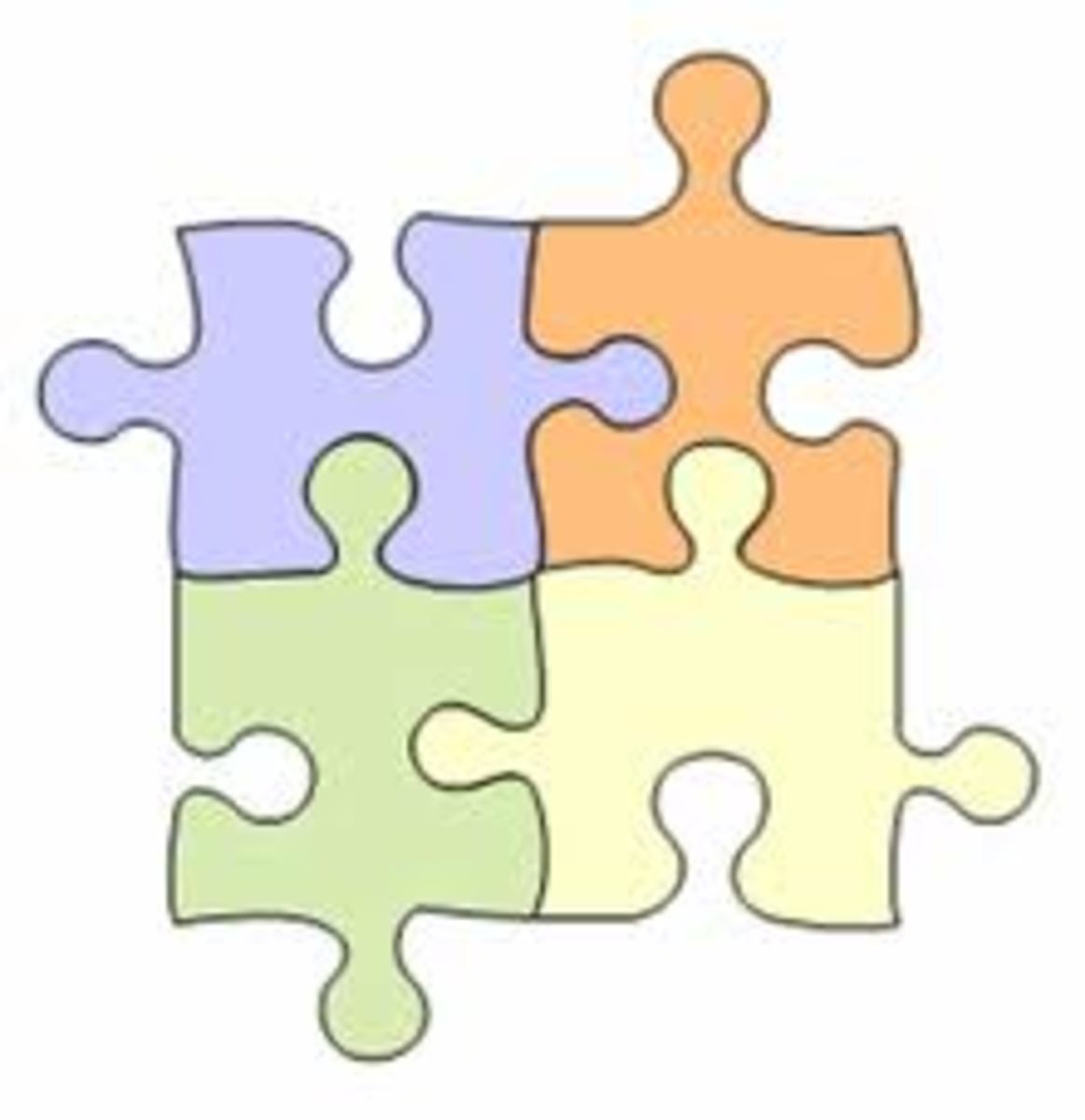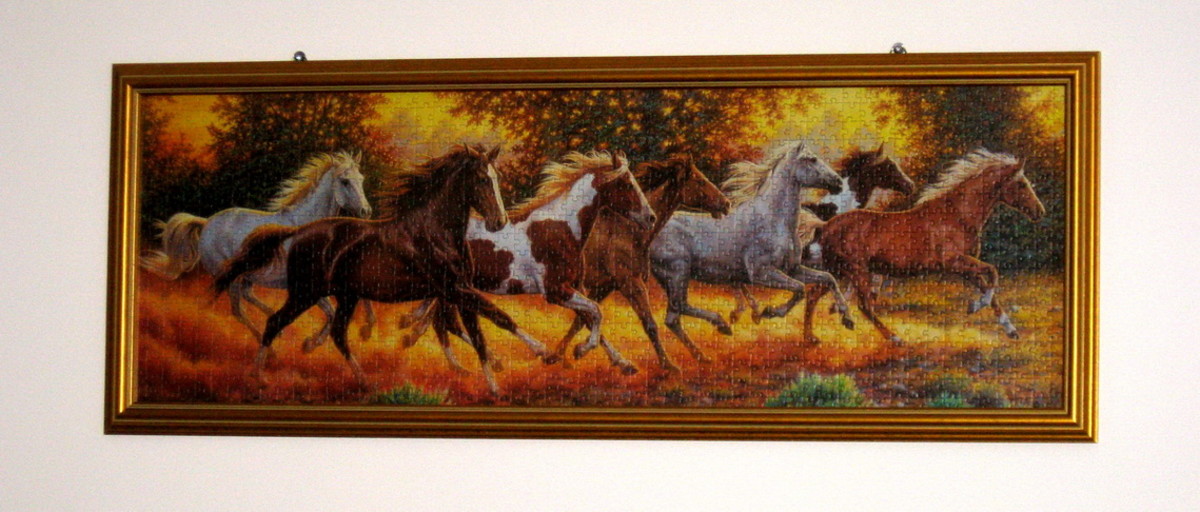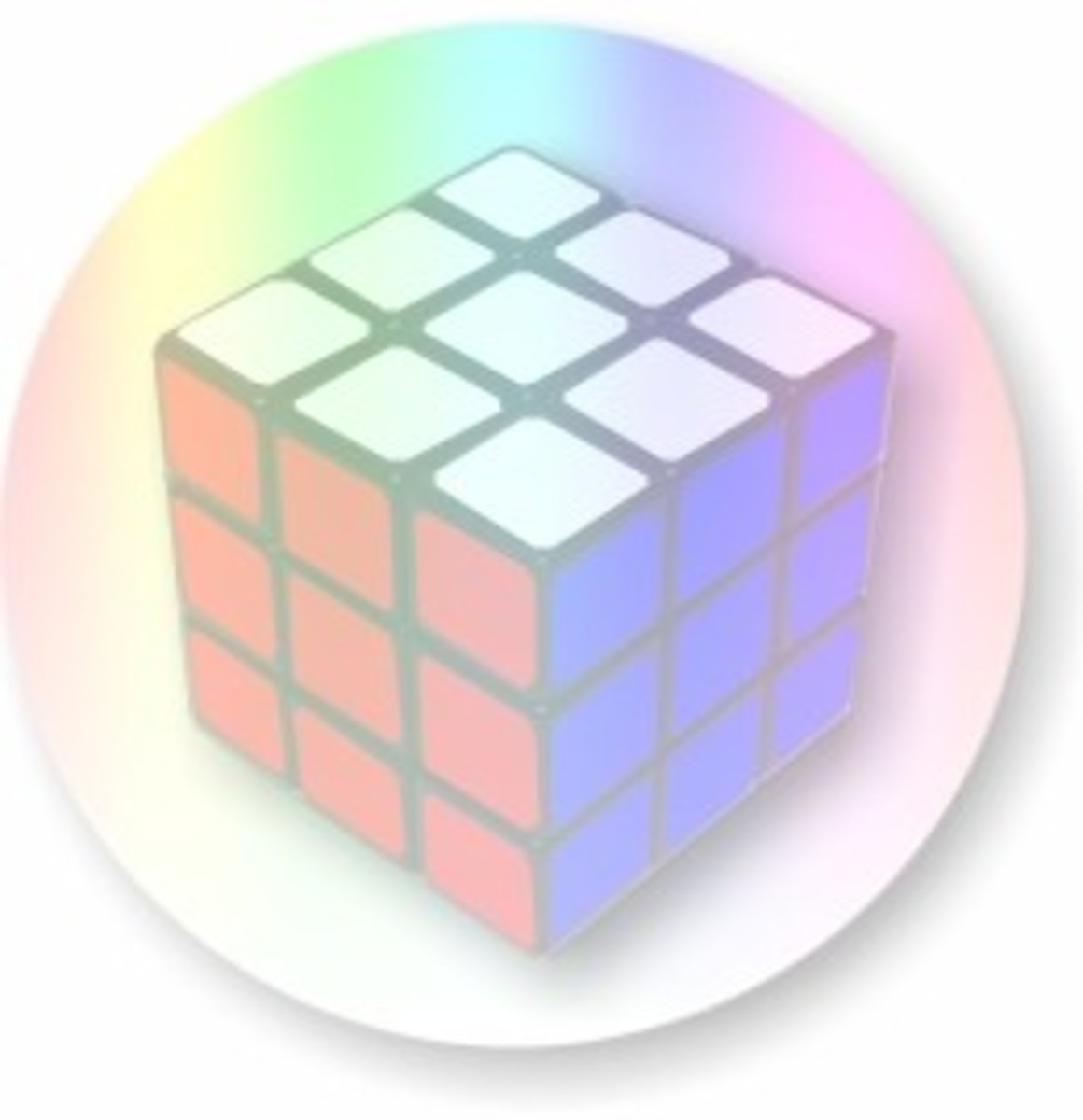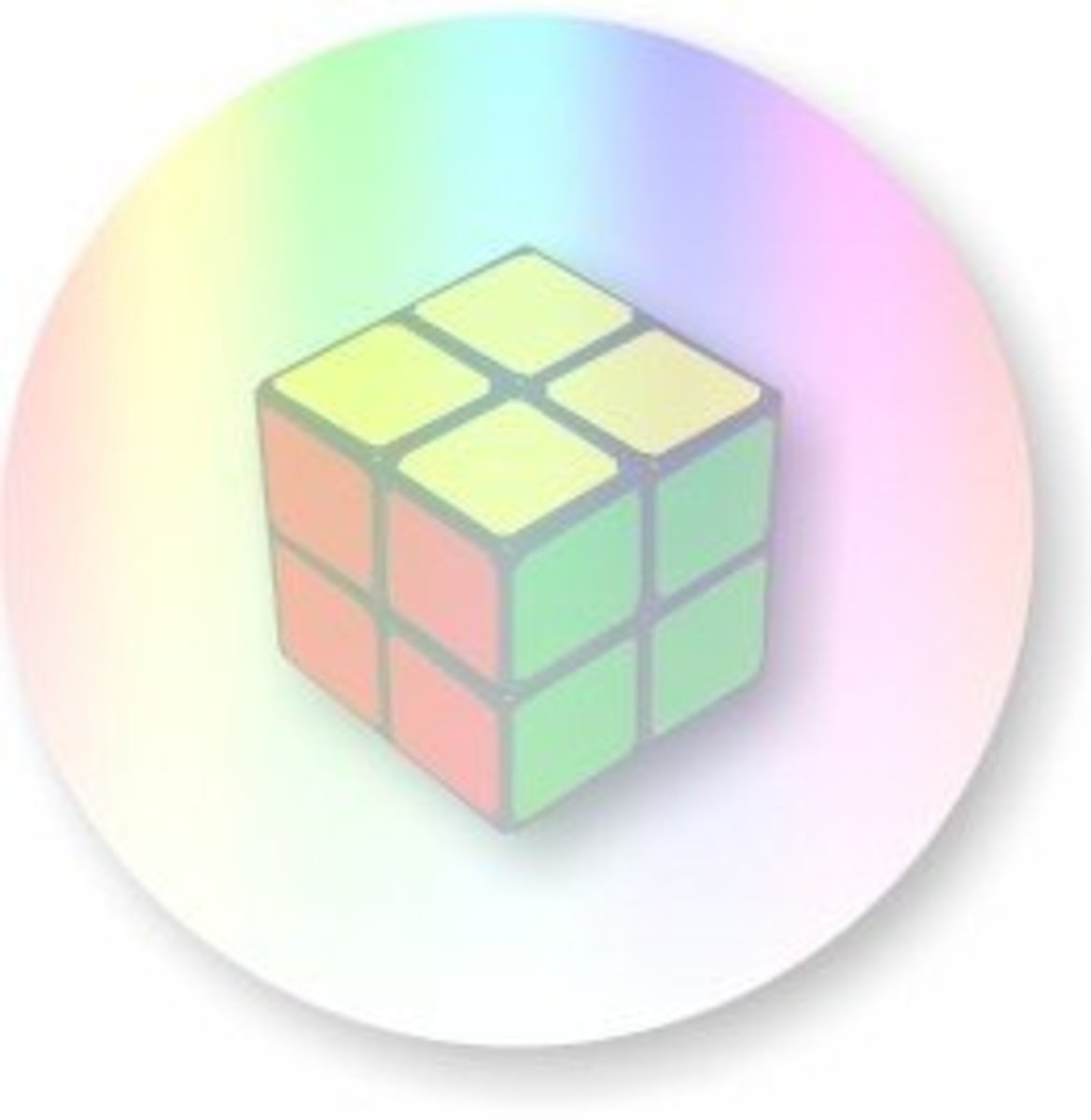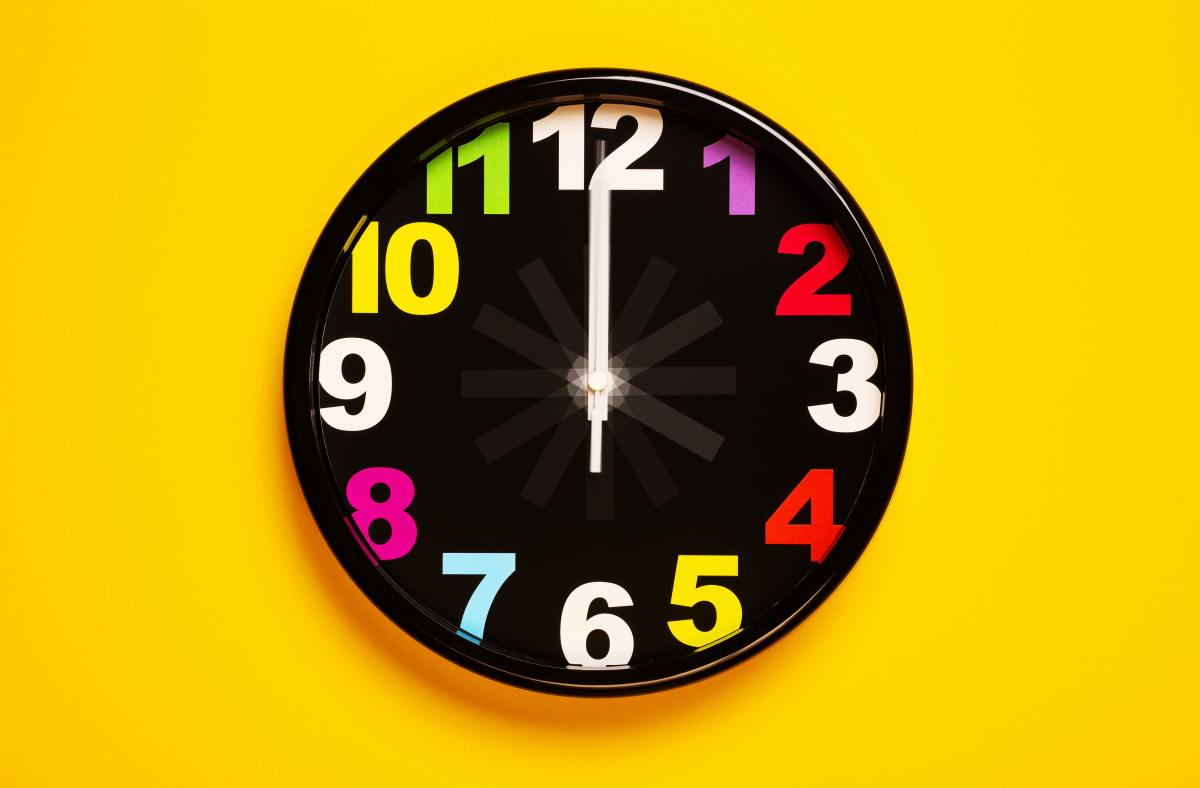Puzzle Strategies for Children, Including Working in Groups
Years ago I was very lucky to hear a marvelous presentation on the use of puzzles. I was doing school-based therapy overseas, and had gone to a week-long continuing education conference put on by the Army in Germany. A very experienced Army Occupational Therapist, a Colonel, gave a class on strategies she used in working with kids with puzzles.
School therapists are seeing children referred for therapy, with various visual perceptual, visual-motor &/or fine motor difficulties. I think there are still interesting lessons for the use of puzzles with normally developing children.
Puzzles are great for facilitating visual perceptual skills such as visual discrimination, spatial relations, form constancy, figure ground, visual closure and visual memory. Children also use visual-motor and fine motor skills to place pieces. If you are working directly with a child on a puzzle, or if children are working in a group, then communication and social skills come into play.
In this hub, I will share some of Col Judy’s strategies, along with my adaptations for working with multiple children using multiple puzzles. I have a modest collection of Ravensburger Disney-themed puzzles. Sets include 20-piece puzzles with 2 related scenes, and 49-piece puzzles with three scenes depicted. There are also 35-piece and 60-piece puzzles, and 36-piece floor puzzles. I have not seen sources for new Disney Ravensburger puzzles, but you could put your own sets together.
You will notice that I do not at any time emphasize segregating border pieces and assembling the border. I was taught to do this, and typically always did. I found however that the children that I worked with did not think or work this way, putting together the border first. I have gotten away from this, as it is pretty arbitrary if you think about it.
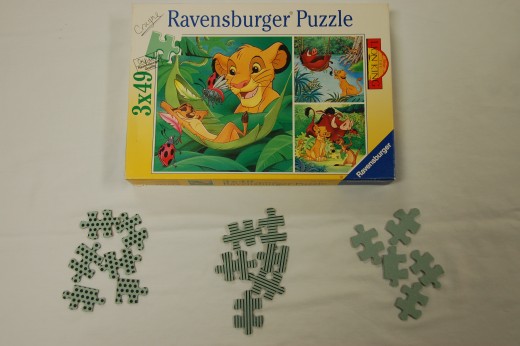
Ravensburger 49-piece puzzles with 3 scenes from the Lion King. Note the 3 puzzles are coded with dots, lines or solid on the back. You could code any of your puzzles similarly, which could be a project of its own.
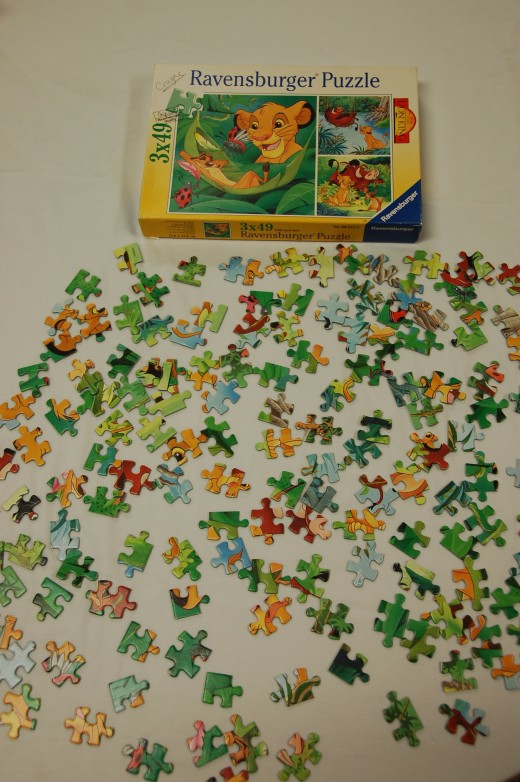
Spread all puzzle pieces with picture side facing up.
You could use 3 puzzles with related scenes as shown, or to decrease difficulty, you could use puzzles of similar sized pieces, but diverse scenes.
This could be set up for 3 children, or use 2 puzzles for 2 children.
You could still use this set-up, with one child, who could select pieces for his/her puzzle from among pieces for 2 or 3 puzzles.
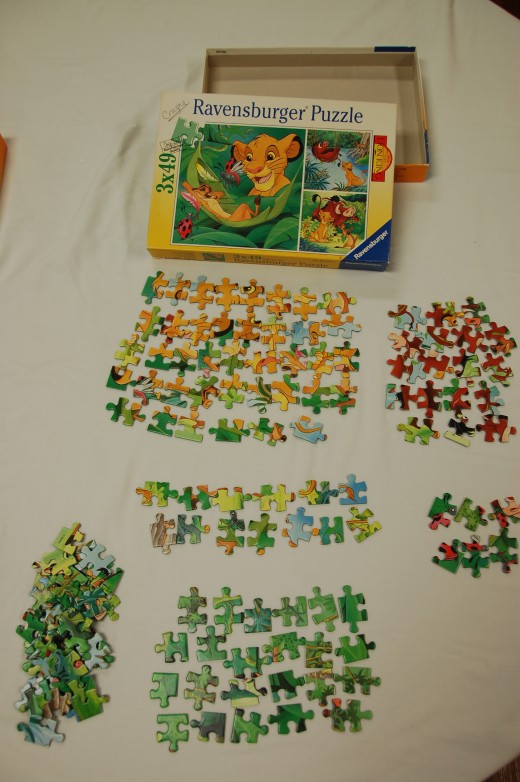
Begin sorting pieces according to color or other attributes.
In this case, brown pieces for Pumbaa (warthog), and yellow/gold pieces for Simba (lion cub) and Timon (meerkat) are grouped.
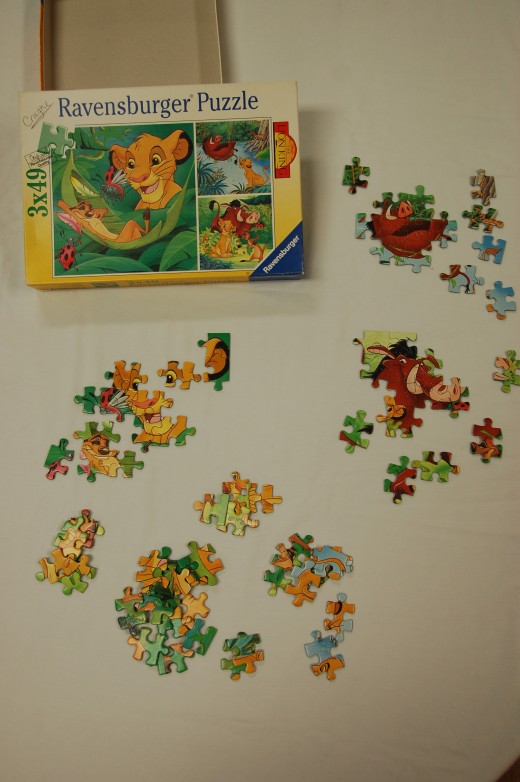
Each child begins putting together the pieces for Pumbaa, Simba or Timon.
Cue children to reference the box for the completed pictures and notice that Pumbaa is much bigger in one puzzle than the other. Simba is big in one puzzle. In the other two, Simba is smaller, but in one, he is turned to the side.
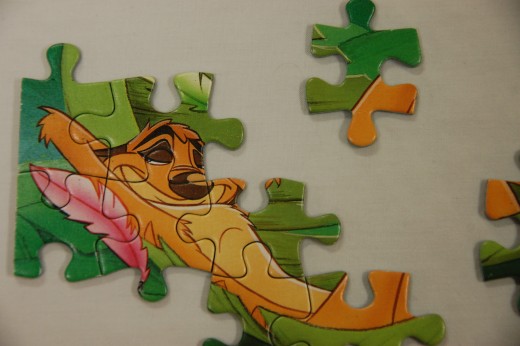
Determine names for the “anatomy” of the puzzle pieces. Use this strategy to help children find the correct pieces. In this case, they would need a yellow “bump” to fit into a yellow “slot”.
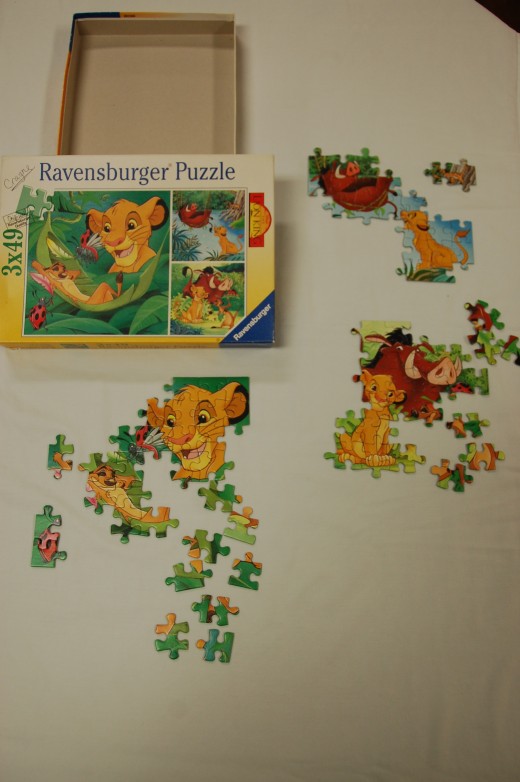
Children continue assembling pieces for Simba, Pumbaa and Timon.
As it gets more difficult at the periphery of the characters, you can draw the child’s attention to other aspects of the picture, such as differences in the background.
One picture has lots of deep green grasses, one has yellow and red tones, one has light blue sky.
With time constraints, you could have the child or children only seek to complete their primary character.
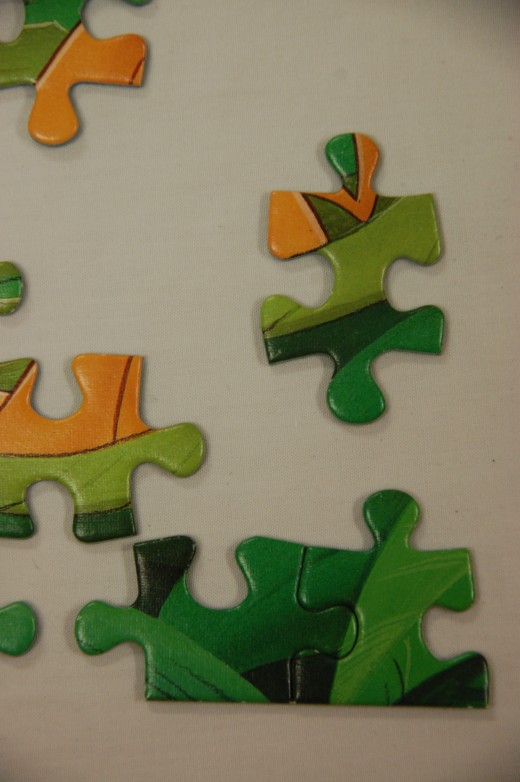
Again, come up with your own names to describe the anatomy of the piece.
The needed piece is in this case is a shape similar to a capital letter “I”.
We need the top left bump of the I to be yellow to fit our yellow groove.
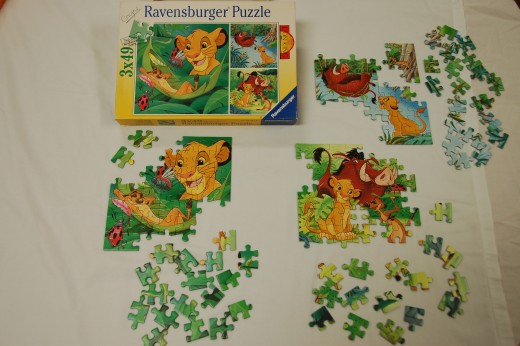
Continue working on completing the puzzle. You may need to cue children again to reference the box for the completed pictures, to key into the surrounding colors of the plants, sky etc.
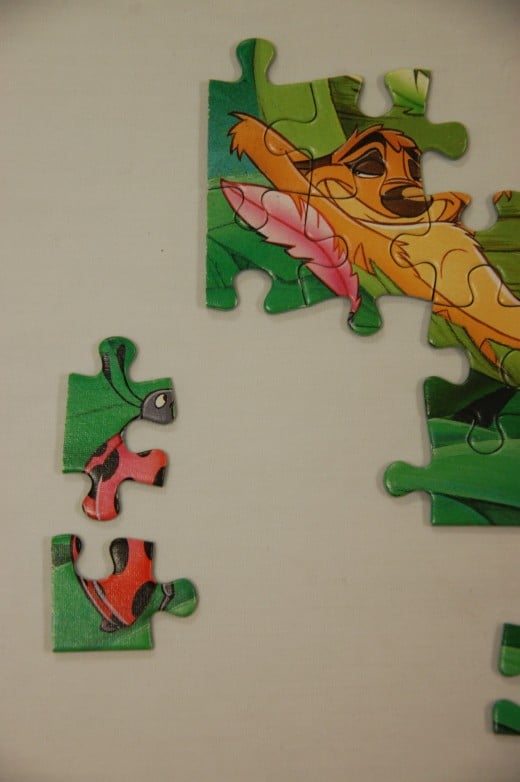
Periphery lady bug with red bump and corresponding slot.
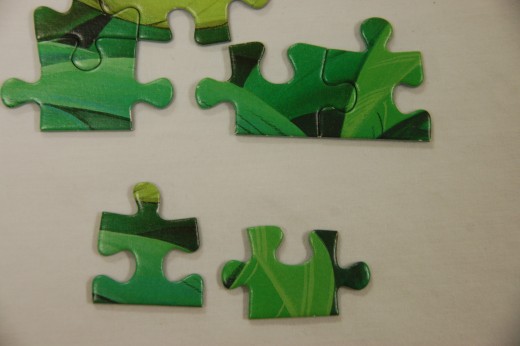
Border piece that is more tall, not wide.
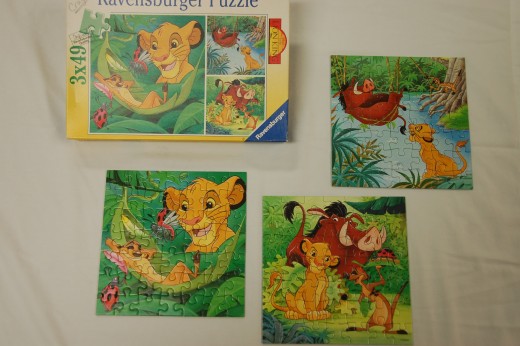
Completed 3 Lion King puzzles.
More on Toys and Games
My Game Review Hubs
Toys- Board Games for Children 3 to 8
Toys- Card and Dice Games for Children 3 to 8
Toys- Family Board Games for Children 8 and Up
Toys- Family Card and Dice Games for Children 8 and Up
Games That Promote Hand Skills for Ages 3 and 4
Games That Promote Hand Skills for Age 5 and Up
Family Games That Promote Motor Skills for Age 6 and Up
Family Games That Promote Motor Skills for Age 8 and Up
More on Games and Toys
Crafts as Toys- $1 Craft Kits for Kids
Toys- Facilitate Skills with Children’s Games and Puzzles
